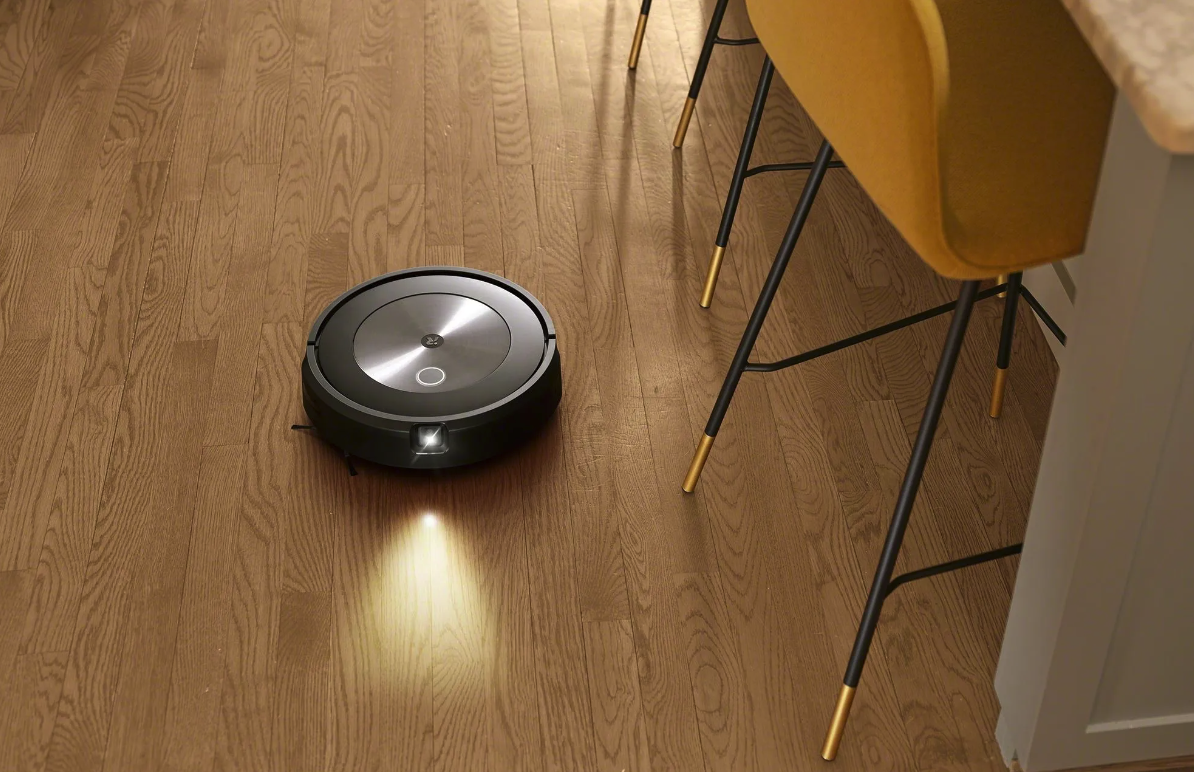
UPDATE: Nov. 15, 2022, 11:40 a.m. EST This story has been updated to reflect the current prices and availability of multiple robot vacuums ahead of Black Friday.
We’ve compiled the best early Black Friday robot vacuum deals. Here are the live deals as of Nov. 15:
-
BEST BUDGET DEAL: The Eufy Clean G32 Pro is the cheapest vac on our current list, sitting at Black Friday pricing at Walmart — $119
$299.99(save $180.99) -
BEST SELF-EMPTYING DEAL: The iRobot Roomba i1+ is your cheapest path to a self-emptying Roomba — $288
$529.99(save $241.99) -
BEST ROBOT VACUUM/MOP DEAL: The Roborock Q7 Max+ is modestly priced for a vac that checks off the big three robot vac features: smart room mapping, self-emptying, and mopping — $649.99
$869.99(save $220 with on-page coupon)
Move over, pastel appliances and 4K TVs: Robot vacuums are a pillar of Black Friday, too. Deals this good mean that features like specific room mapping and automatic emptying aren’t reserved for upper-echelon Roomba budgets anymore.
Despite the official date still being over a week away, the 2022 Black Friday season is already proving to be a great time to buy a new robot vacuum, including new all-time-low prices on flagship best sellers like the Roomba j7+. Retailers like Walmart, Best Buy, and Target have been dropping Black Friday deals since mid-October, with many robot vacuum models listed with an official “Black Friday price” stamp.
Any deal with a strikethrough is back to full price or sold out, but could reappear in the upcoming weeks. If that happens, we’ll bring it back. Any new deals will be marked with a ✨, and any robot vacs marked with a ⚡️ are already at their Black Friday price, as marked by select retailers’ early Black Friday sales. The lightning bolt doesn’t mean that the BF sale price can’t disappear between now and Black Friday, so if you see that stamp, snag it while you can.
Robot vacuums under $200
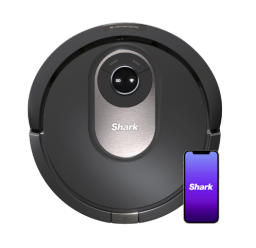
Opens in a new tab
Why we like it
LiDAR — the laser tech that allows a vacuum to map specific rooms rather than sweeping a generic path between walls — is almost never found in vacs under $200. If you care more about targeted cleaning and app-controlled no-go zones over intense suction on carpets, take advantage of Walmart’s discount on this budget Shark model.
-
Room mapping and zone cleaning
-
120-minute battery life
-
Self-cleaning brush roll
More robot vacuums under $200
-
Eufy Clean G32 Pro — $119
$299.99(save $180.99) ✨⚡️ -
ILIFE V3s Pro — $129.99
$159.99(save $30 with on-page coupon) -
Eufy 25C — $149
$219.99(save $70.99) -
iRobot Roomba 676 — $177
$269.99(save $92.99) -
Ionvac SmartClean V4 with Self-Empty Dock — $179
$299(save $120)
Robot vacuums under $500
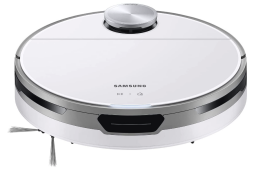
Opens in a new tab
Why we like it
If you have a bumbling robot vac that causes more problems than it’s worth, treat yourself to a vac with demonstrated brain power. Samsung’s Jet Bot receives pretty outstanding reviews for its accurate laser mapping and — surprise — ability to actually find the room or zone you select. Though some energy is also dedicated to automatically adjusting suction to floor type and debris amount, the Jet Bot can clean for an hour and a half before recharging. The colossal 58% discount at Amazon is drastic compared to the measly discounts seen on the rest of the Jet Bot line.
-
Room mapping and zone cleaning
-
Suction automatically adjusts to floor type and level of debris
-
90-minute battery life
More robot vacuums under $500
-
Neato Robotics D8 — $229
$399.99(save $170.99) -
Shark EZ RV915S — $258
$449.99(save $191.99) ⚡️ -
iRobot Roomba i1+ — $288
$529.99(save $241.99) ⚡️ -
iRobot Roomba i3 Evo — $299
$349.99(save $50.99) -
Neato Robotics D9 — $299
$499.99(save $200.99) -
Roborock Q5 — $329.99
$429.99(save $100) ✨ -
eufy RoboVac X8 — $349.99
$499.99(save $150 with on-page coupon) -
iRobot Roomba j7 — $410.57
$599.99(save $189.42) -
Shark AI Ultra AV2501AE XL — $400.90
$649.99(save $249.09) -
iRobot Roomba i7+ — $499.99
$899.99(save $400) ⚡️
Robot vacuums under $800
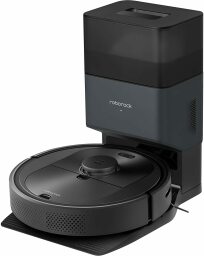
Opens in a new tab
Why we like it
Before summer 2022, buying a Roborock that auto-empties would cost you between $949.88 and $1,399.99. But a few mid-range releases created some leeway in price without sacrificing convenience. The cheaper one, the Q5+, skips mopping functionality, but still uses LiDAR to map your home layout, cleans with impressive 2,700 Pa suction, and empties itself.
-
Room mapping and zone cleaning
-
180-minute battery life
-
Self-empty dock holds almost seven weeks’ worth of debris
More robot vacuums under $800
-
iRobot Roomba j7+ — $579.99
$799.99(save $220)
Robot vacuum and mop hybrids and dedicated robot mops
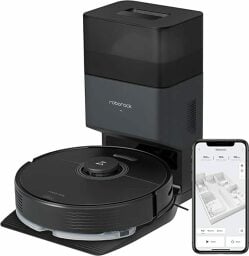
Opens in a new tab
Our pick: Roborock Q7 Max+
(opens in a new tab)
Why we like it:
If your home has lots of hard floor, tile, or laminate, consider opting for the Roborock Q7+ Max over the Q5+. It adds mopping to the menu, simultaneously scrubbing and deploying an intense 4,200 Pa in dry suction — except on carpet, where it knows to lift mopping pads and stop releasing water.
-
Room mapping and zone cleaning
-
180-minute battery life
-
Self-empty dock holds seven weeks’ worth of debris
More hybrids and robot mops on sale
-
Yeedi Vac Max — $239.99
$349.99(save $110 with on-page coupon) -
Roborock E5 — $219.99
$359.99(save $140 with on-page coupon) -
Dreametech L10 Pro — $279
$489.99(save $210.99 with on-page coupon) -
Yeedi Vac Station — $349.98
$499(save $149.02) -
iRobot Braava jet m6 — $370
$499.99(save $129.99) -
eufy RoboVac X8 Hybrid — $319.99
$649.99(save $330 with on-page coupon) -
Ecovacs N8+ — $399.99
$549.99(save $250) -
iRobot Roomba i3+ and Braava Jet m6 bundle — $649.99
$899.99(save $250) ✨ -
iRobot Roomba s9+ and Braava Jet m6 bundle — $1,249
$1,449(save $200)
Are robot vacuums worth it?
The control of an upright vacuum comes with its own type of satisfaction. But if you’re not one to classify cleaning as cathartic, a robot vacuum could erase that agonizing task off of your chore list. (And did we mention the joy of always having just-cleaned floors?)
But whether robot vacuums are worth it or not comes with a caveat: It can’t be just any robot vacuum. A cheap robovac that doesn’t do the job right — scattering dust, bumping into walls, getting stuck on area rugs — will actually create more work for you.
What to consider when buying a robot vacuum
-
Suction power: A vacuum is the one purchase that you hope sucks a lot. Suction power is typically measured in Pascals (Pa), with most current vacs ranging between 1,500 Pa and 3,000 Pa. Stronger sucking will be needed to pick up heavier pieces of debris (be sure to set a no-go zone around Legos) and to pull matted-down pet hair from rugs.
-
Floor type: Carpeting and high pile rugs will probably require stronger suction than hard floors, as well as special features like an extra-wide or self-cleaning brush roll to prevent hair from wrapping and clogging. Folks in homes with multiple floor types might consider a bigger, sturdier robot vacuum that can hurl itself and its wheels over mats, rugs, and transition from carpet to hard floors.
-
Automatic emptying: Because robot vacuums are typically under four inches tall, their onboard dust bins are also small — which means they frequently require emptying. (Dustbins fill up particularly quickly in homes with pets.) A self-emptying vacuum takes that job out of your hands, emptying itself into a larger dustbin in its charging dock. These larger bins can typically hold weeks of dirt without needing to be cleaned or dumped out.
-
Home layout: Every robot vacuum is equipped with sensors and drop detection. But if your home has lots of rooms, turns, or close-together furniture, you’ll have fewer navigation issues with an advanced model that uses intelligent mapping to remember exactly how your home is laid out, including labeling of specific rooms, mental notes of staircases, and ability to deploy zone cleaning.
-
Low-profile furniture: No one should have to be scared about what’s accumulated under their couch over the past year. A robot vacuum measuring three inches or less in height should be able to scoot under most low-hanging couches and beds.
-
Battery life and square footage: One of the main complaints people have about their robot vacuum is that it craps out in the middle of the floor. Larger spaces require more time to clean, and it all depends on how annoyed you’ll be if it only finishes a few rooms at a time. Average run times for the models here range between 90 and 200 minutes, which translates to about 500 and 2,800 square feet covered on one charge.
-
App control: WiFi-enabled robot vacuums can be synced with a smartphone app to control scheduling, manual start, and cleaning settings, as well as telling your vac to make its rounds when you’re not home. Low-end models that don’t connect to WiFi will usually come with a separate remote. If you’re used to asking Alexa or Google to turn off the lights or tell you the weather, a model with voice integration will blend in nicely.
